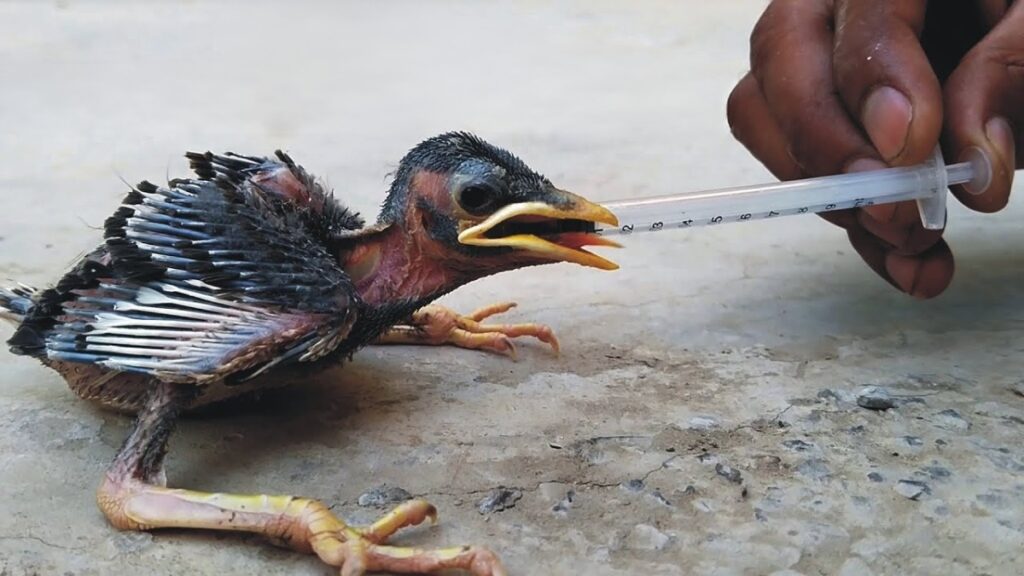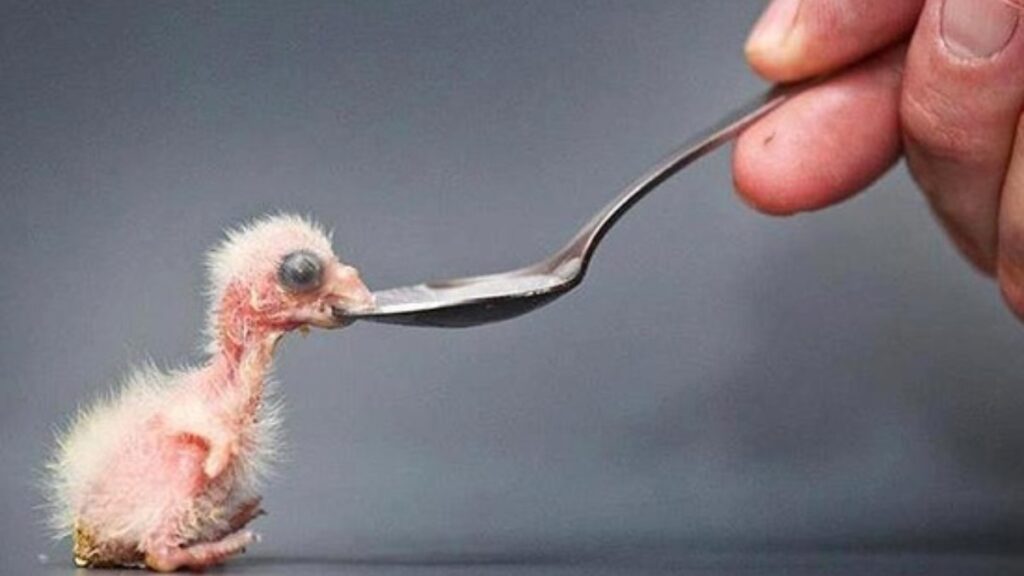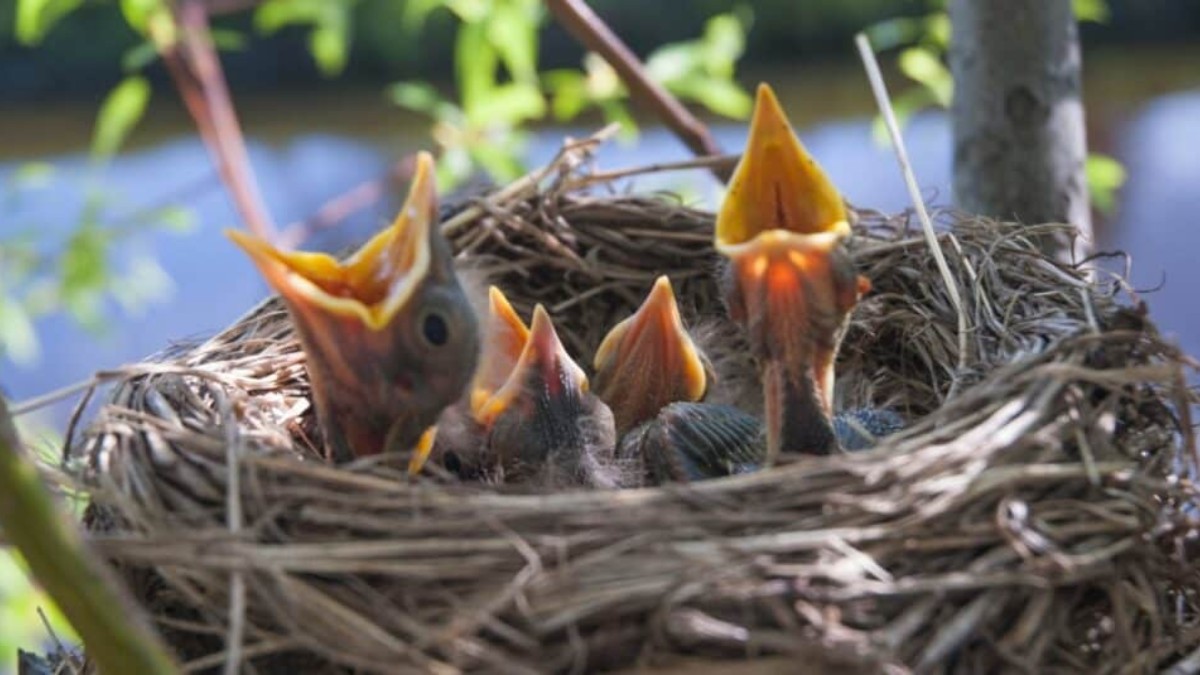Feeding a baby bird requires careful attention to detail, with newly hatched chicks needing food every 2-3 hours, totaling 6-10 feedings per day. Importantly, the common belief that handling baby birds causes parent rejection is actually a myth, making it possible to safely feed and care for these delicate creatures.
The process of how to feed a baby bird demands precise temperature control, with food needing to be warmed to approximately 100°F (37.8°C) for successful feeding. In fact, baby birds have specific dietary needs based on their species and age, and feeding them incorrect foods can be fatal. This comprehensive guide provides veterinary-approved methods for baby bird feeding, ensuring their safety and optimal growth from hatchling to fledgling stage.
Contents
When to Feed a Baby Bird
Before learning how to feed a baby bird, be sure you know what to feed it. This is after determining whether the bird truly needs human intervention is crucial. Many well-meaning people unnecessarily “rescue” baby birds that are actually under their parents’ care.
Signs a baby bird needs help
A baby bird requires immediate feeding and care under specific circumstances. These critical signs include:
- Visible blood or injuries
- Cold, weak, or shivering body
- Being in immediate danger
- Previous contact with cats or dogs
Furthermore, the bird’s age plays a vital role in determining if it needs help. Nestlings, which lack feathers, cannot survive outside their nests and require immediate assistance. Meanwhile, fully feathered fledglings often appear helpless while learning to fly, though they typically don’t need intervention.
How to check if parents are nearby
Specifically, observing the bird from a distance helps determine if parents are still caring for it. The observation should last at least two hours. Parents may be foraging for food and will return to feed their babies regularly.
Notably, parent birds remain nearby in trees when caring for fledglings, coming down to feed them anywhere from several times per hour to every 1-2 hours. Consequently, staying too close to the baby bird can prevent parents from approaching, so watching from inside a house through a window is recommended.
Strong winds or storms might occasionally force chicks out of their nests earlier than normal. In such cases, if the original nest is accessible, placing the warm baby back is the best solution. When the original nest cannot be reached, creating a substitute nest using a margarine tub with drainage holes, lined with dry grass or pine needles, and hanging it near the original location can help.
Remember that birds have a poor sense of smell, and the common belief about parents rejecting babies touched by humans is incorrect. If parents don’t return after extended observation or if the bird shows signs of injury, consulting a wildlife rehabilitator becomes necessary.

Essential Safety Tips Before Feeding
Safety precautions form the foundation of successful baby bird feeding. Proper preparation prevents potential health risks and ensures optimal care for these delicate creatures.
Proper hand hygiene
Learning how to feed a baby bird starts with impeccable cleanliness. Thorough hand washing before handling the bird or any feeding equipment is essential. Additionally, all feeding equipment must be sanitized between uses, as leftover food creates an ideal environment for harmful bacteria and yeast growth.
Creating a safe feeding environment
The feeding space requires precise temperature control for optimal growth. A quality brooder should maintain temperatures between 95°F for newly hatched birds. Moreover, the environment must include proper air circulation and humidity control.
For bedding, soft paper towels or disposable materials provide secure footing. Primarily, the bottom texture needs careful consideration – if too smooth, chicks may develop permanent leg deformities. The feeding area should remain:
- Free from drafts and direct sunlight
- Away from household pets
- Protected from loud noises
- Clean with regular bedding changes
Required feeding tools
Understanding how to feed a baby bird properly requires specific equipment. The essential tools include:
- Syringes (preferred feeding tool for accurate volume measurement)
- Thermometer for monitoring food temperature
- Specialized feeding formula
- Clean feeding dishes
- Proper brooder or heating setup
Food temperature monitoring is particularly critical – it must stay between 102°F-106°F throughout the mixture. Subsequently, any food prepared in a microwave needs thorough mixing to eliminate hot spots that could harm the bird.
Baby bird feeding success depends heavily on proper tool selection. Essentially, while syringes offer the most control, some caregivers might prefer spoons with bent sides. Furthermore, feeding tubes should be avoided due to potential crop damage risks.
Step-by-Step Guide to Feed a Baby Bird
Mastering how to feed a baby bird starts with understanding the precise techniques that ensure safe and effective feeding. Proper positioning and temperature control form the foundation of successful baby bird feeding practices.
Correct feeding position for how to feed a baby bird
The natural feeding response involves rapid head bobbing in an up-down motion. Accordingly, proper positioning requires:
- Hold the bird in your non-dominant hand
- Support the head with gentle finger pressure
- Position the bird slightly upright
- Place the feeding tool along the left side of the beak
- Synchronize food delivery with swallowing motions
Primarily, stimulate the feeding response by applying gentle pressure at the corners of the mouth. Rather than forcing the beak open, wait for the natural gaping response that indicates hunger.
Food temperature guidelines
Temperature control remains critical for baby bird feeding success. Formula must maintain 102°F-106°F (39°C-41°C) throughout the feeding process. Initially, test the temperature with a thermometer, as food that’s too hot can cause severe crop burns.
For proper temperature maintenance:
- Avoid microwave heating due to hot spot risks
- Use a double-boiler setup to maintain consistent warmth
- Stir thoroughly to eliminate temperature variations
- Test temperature before each feeding session
Feeding frequency chart
The feeding schedule varies based on age and development:
Hatchlings (0-7 days):
- Feed every 2-3 hours
- 6-10 feedings daily
- First feeding at sunrise
- Last feeding at sunset
Pre-fledglings (eyes closed):
- Feed every 3-4 hours
- 5-6 feedings daily
Developing chicks (eyes open):
- Feed every 5 hours
- 3-5 feedings daily
Feathered chicks:
- Feed every 6 hours
- 2-3 feedings daily
Generally, monitor the crop’s fullness between feedings – it should empty completely before the next feeding. Soon after feeding, the crop appears visibly distended at the base of the neck. Undeniably, successful feeding requires careful attention to both timing and quantity, with each meal consisting of approximately 10-12% of the bird’s body weight.

Best Foods for Different Bird Ages
Proper nutrition forms the cornerstone of how to feed a baby bird successfully. Different age groups require specific diets to support their rapid development and growth patterns.
Newborn bird diet (0-3 days)
During the first 12-24 hours after hatching, newborns primarily rely on their yolk sac for nutrients. Following this initial period, these delicate creatures need highly diluted mixtures containing 90% water. A specialized commercial hand-feeding formula provides the most reliable nutrition source for newborns. Ordinarily, the formula should maintain a temperature between 102°F-106°F throughout feeding.
Young nestling food (4-7 days)
Young nestlings experience explosive growth, gaining approximately 2.5 grams daily between days 4-7. At this stage, how to feed a baby bird becomes more complex, requiring a diet consisting of:
- High-protein insects (60% of diet)
- Hard-boiled eggs (20%)
- Specialized formula (20%)
Evidently, the food consistency should contain 70-75% liquid during this rapid growth phase. The metabolic demands increase significantly, requiring parents in nature to make hundreds of feeding trips daily.
Older bird nutrition (8+ days)
Following day 8, baby birds develop different nutritional needs based on their species. Altogether, their diet should align with their natural food preferences. For insect-eating birds, finely chopped worms, grasshoppers, and mosquito larvae provide essential proteins. Alternatively, fruit-eating species can gradually incorporate soft fruits and berries into their diet.
The feeding schedule adjusts as birds mature. By day 12-13, they typically reach 15 times their hatching weight. Similarly, their food requirements change:
Firstly, ensure all insects are appropriately sized to prevent choking. Commercial formulas should be prepared fresh for each feeding, as leftover food creates an ideal environment for harmful bacteria. For specialized species like doves and pigeons, commercial hand-feeding formula designed specifically for their needs works best.
Understanding how to feed a baby bird at this stage requires careful attention to their developing capabilities. As feathers grow in, they begin showing interest in self-feeding. During this transition period, maintain proper food temperature and consistency while gradually introducing adult food types appropriate for their species.
Common Feeding Mistakes to Avoid
Understanding common mistakes in how to feed a baby bird can prevent tragic outcomes. Primarily, inexperienced caregivers make well-intentioned errors that often lead to severe health complications or fatality.
Dangerous food items
Numerous foods pose serious risks when learning how to feed a baby bird. Indeed, certain common items can cause severe illness or death:
- Avocado – Contains persin, causing heart conditions and respiratory distress within hours
- Chocolate – Leads to heart rhythm changes, seizures, and death due to theobromine
- Fruit pits and seeds – Apple, cherry, and peach pits contain dangerous levels of cyanide
- Onions and garlic – Cause blood cell damage and affect liver and kidney function
- Milk products – Birds cannot process lactose, leading to digestive problems
Unfortunately, many caregivers attempt to feed baby birds human foods containing artificial sweeteners, high salt content, or processed ingredients. Obviously, these choices can result in dehydration, kidney dysfunction, and other severe health issues.
Incorrect feeding techniques
Baby bird feeding requires precise methods, hence improper techniques can cause devastating results. Several critical errors include:
Temperature Mismanagement: Feeding formula at incorrect temperatures causes crop burns, forming dangerous fistulas that require immediate veterinary intervention. These burns often go unnoticed until days later when serious complications develop.
Overfeeding Complications: Excessive feeding leads to:
- Food regurgitation and subsequent aspiration
- Stretched crops unable to perform proper muscular contractions
- Bacterial and fungal infections from fermented food
Force-Feeding Dangers: Forcing food into an unwilling bird’s mouth increases aspiration risks. The natural feeding response involves head bobbing – any deviation from this can be dangerous.
Formula Preparation Errors: Modifying commercial formulas with additives like peanut butter or human baby food disrupts the crucial fat-to-protein ratio. Certainly, this alteration slows digestion and triggers various health complications.
Volume Control Mistakes: A healthy baby bird requires approximately 10-12% of their body weight per feeding. Nevertheless, some species, particularly cockatoos, beg continuously even when full, leading caregivers to dangerously overfeed them.
Hygiene Oversights: Poor sanitization of feeding equipment creates environments for bacterial growth. Despite good intentions, many caregivers reuse or reheat formula, significantly increasing infection risks.
Real-world consequences of these mistakes can be severe. For instance, a documented case showed a woodpecker fed exclusively Vienna sausages developed irreparable nutritional problems. Another case involved baby cardinals receiving only shrimp, resulting in fatal nutritional deficiencies.
Understanding how to feed a baby bird correctly requires recognizing these potential pitfalls. Proper technique, appropriate food choices, and careful attention to hygiene form the foundation of successful baby bird feeding.
Frequently Asked Questions about How to Feed a Baby Bird
How often to feed a baby bird?
Baby birds need to be fed frequently, typically every 15 to 20 minutes from sunrise to sunset for very young birds. As they grow older, the feeding frequency can be reduced to every 30 to 45 minutes. It’s essential to observe the bird’s behavior, as open mouths and begging signals indicate hunger.
How to feed a baby bird with a syringe?
To feed a baby bird with a syringe, fill the syringe with a suitable, soft, and warm food mixture designed for baby birds. Gently place the syringe near the bird’s beak and allow the bird to open its mouth voluntarily before slowly dispensing the food. Be careful not to force-feed or squirt the food too quickly, as this can cause aspiration.
How to feed a wild baby bird?
When learning how to feed a wild baby bird, it’s important to mimic its natural diet as closely as possible. Use a soft, moist food mix appropriate for its species and feed it using small tools like tweezers or a syringe. Always handle the bird gently and minimize interaction to avoid causing stress.
How to feed a baby bird that fell out of the nest?
If a baby bird has fallen out of the nest, assess if it is a nestling or fledgling. For nestlings, create a temporary, warm, and safe environment and feed it with an appropriate food mixture using a dropper or tweezers. If it’s a fledgling and appears healthy, it’s often best to leave it where it is, as the parents may continue to feed it.
How do you take care of a baby bird?
Taking care of a baby bird involves providing a warm, secure environment, frequent feeding with proper nutrition, and ensuring hydration. Use soft materials to create a comfortable nest-like space and keep the bird in a quiet area. Whenever possible, contact a wildlife rehabilitator for expert guidance, as caring for wild birds requires specialized knowledge.

